The Mini eMastered by David Brown Automotive is my new favourite urban EV
This restored, modified and electrified classic Mini is the perfect car for city traffic, but it comes at a price

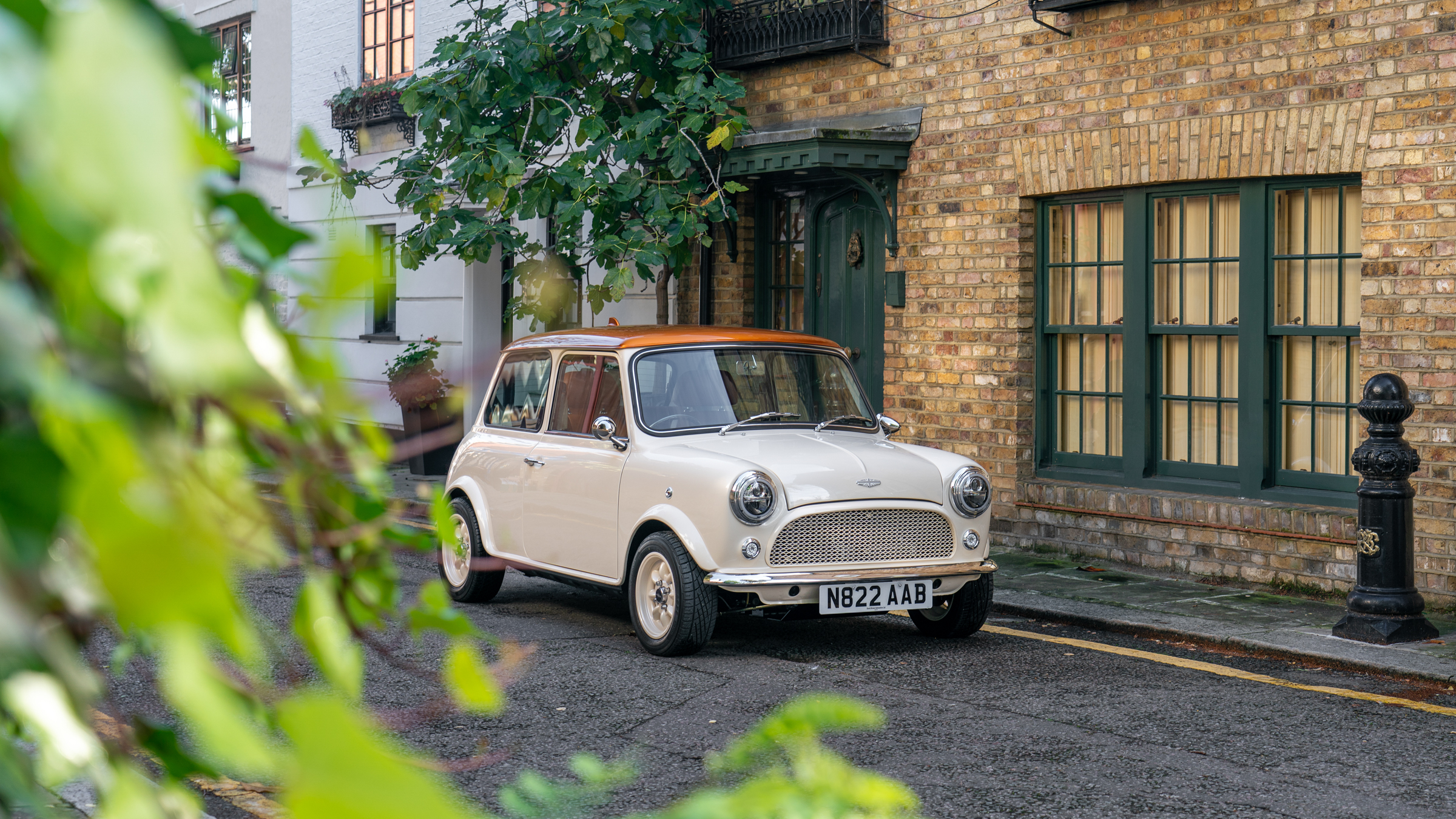
Never has a car felt more at home than the electrified classic Mini I've just driven through West London.
Built by David Brown Automotive and called the eMastered, it’s a Mini that looks very similar to the 1959 original, but with a brand new body, a beautifully-trimmed leather interior, modern conveniences like Apple CarPlay and all the performance you need from an electric city car.
The King’s Road might have more traffic today than in the Swinging Sixties, and the late-October weather was predictably unpredictable. But none of that could wipe the smile from my face.
It’s a small car, of course, but not so much that its driver is made to feel vulnerable when surrounded by SUVs, as is the case in a Caterham. The sit-up-and-beg driving position means you’re plenty high enough to see clearly through traffic, while the skinny pillars and near-vertical glasshouse provide masses of visibility that more than makes up for the tiny wing mirrors. A quick glance over your shoulder is all you need to complete the sort of lane change that can feel a bit hit-and-hope in larger modern cars.
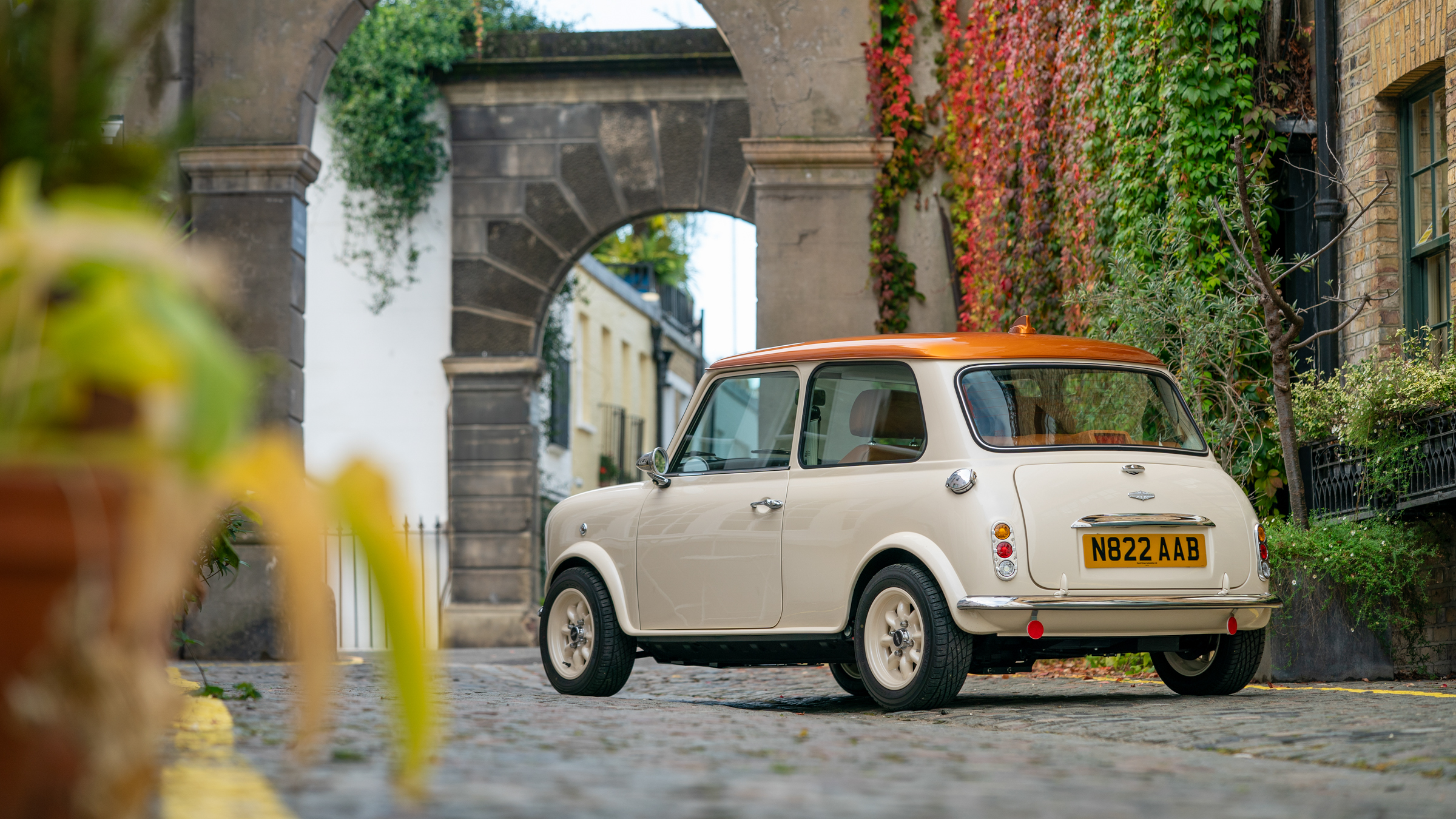
When the traffic finally clears – and the speed limit mercifully increases from 20 mph to 30 – the Mini eMastered zips off the line with the urgency with which electric car drivers will be familiar. The single, front-mounted motor produces 72 kW (about 97 horsepower) and there’s a hearty shove of torque (to the tune of 175 Nm, or 129 ft-pounds in old money). It’s enough to beat other traffic away from the lights, but only sufficient to reach 62 mph in a claimed 8.5 seconds, while the top speed is a plentiful 92 mph.
David Brown Automotive has done a good job calibrating the accelerator pedal. Even the biggest manufacturers sometimes struggle to make the pedal of an EV feel intuitive and predictable, but DBA has nailed it and the car feels responsive at low speed without coming across as nervous.
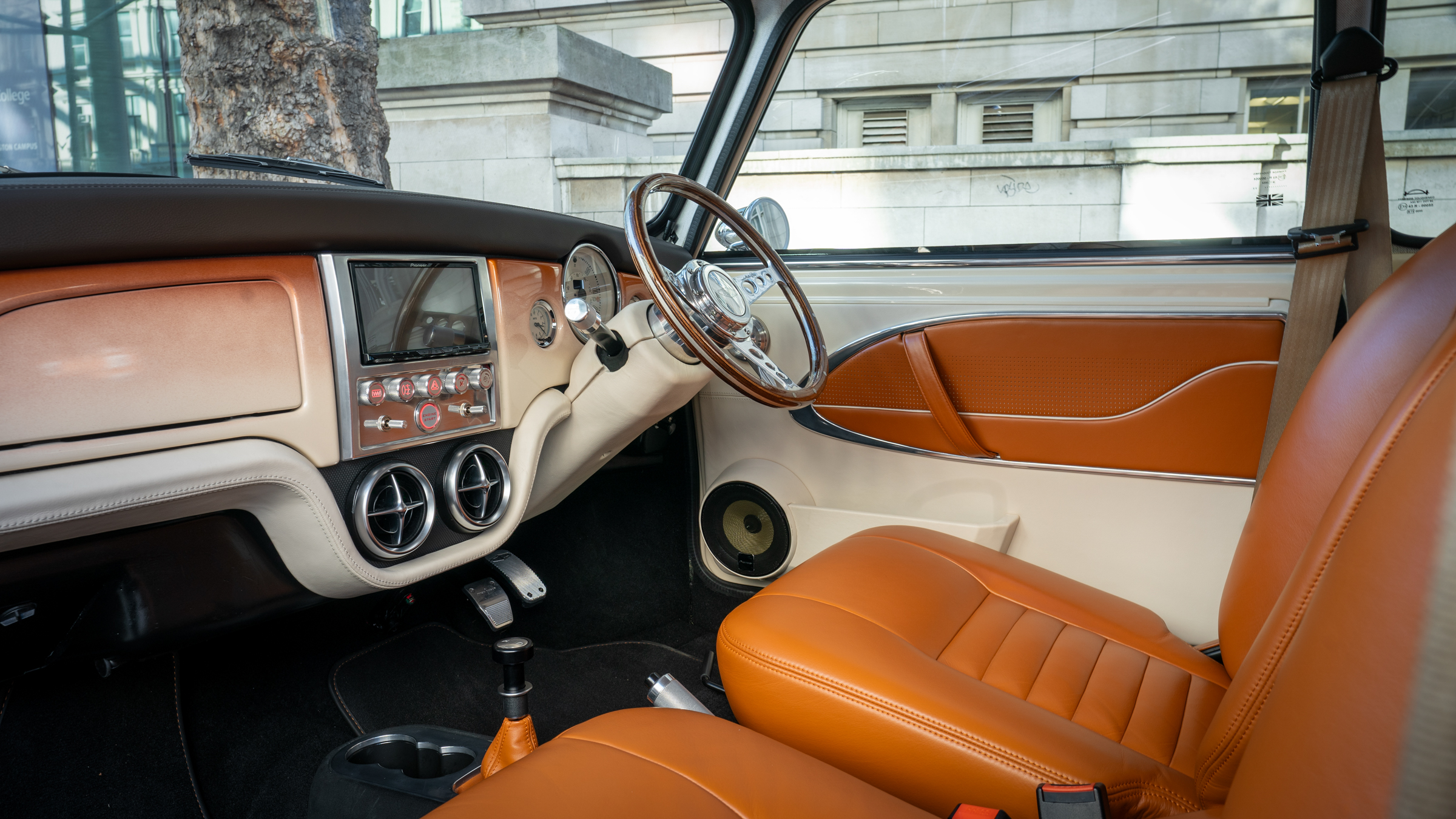
The regenerative braking is not adjustable though, so you’ll be using the brake pedal more than in most other electric cars. The left-hand pedal is firm and the brakes are reassuringly strong – or rather, they feel strong because the car only weighs 640 kg, which is about the same as an original Mini and 100 kg less than the company’s petrol-powered Mini Remastered.
Get all the latest news, reviews, deals and buying guides on gorgeous tech, home and active products from the T3 experts
Lightness is key here, and outright performance doesn’t really matter. I didn’t venture beyond 40 mph during my two-hour pootle around West London, and nor did I feel I was missing out. Electrification means today even a Volvo SUV can near-as-dammit beat the supercars from your teenage bedroom wall to 60 mph. But today, in the little Mini, a quick squirt from 10 to 30 to overtake a bus is all I ever needed.
I also didn’t come close to bothering the claimed 110-mile range of the 18.8 kWh battery, and neither will David Brown Automotive’s customers. They’ll use the Mini eMastered for popping to the shops or going out to lunch. For such tasks, in a congested city like London, I can think of no better way of getting around.
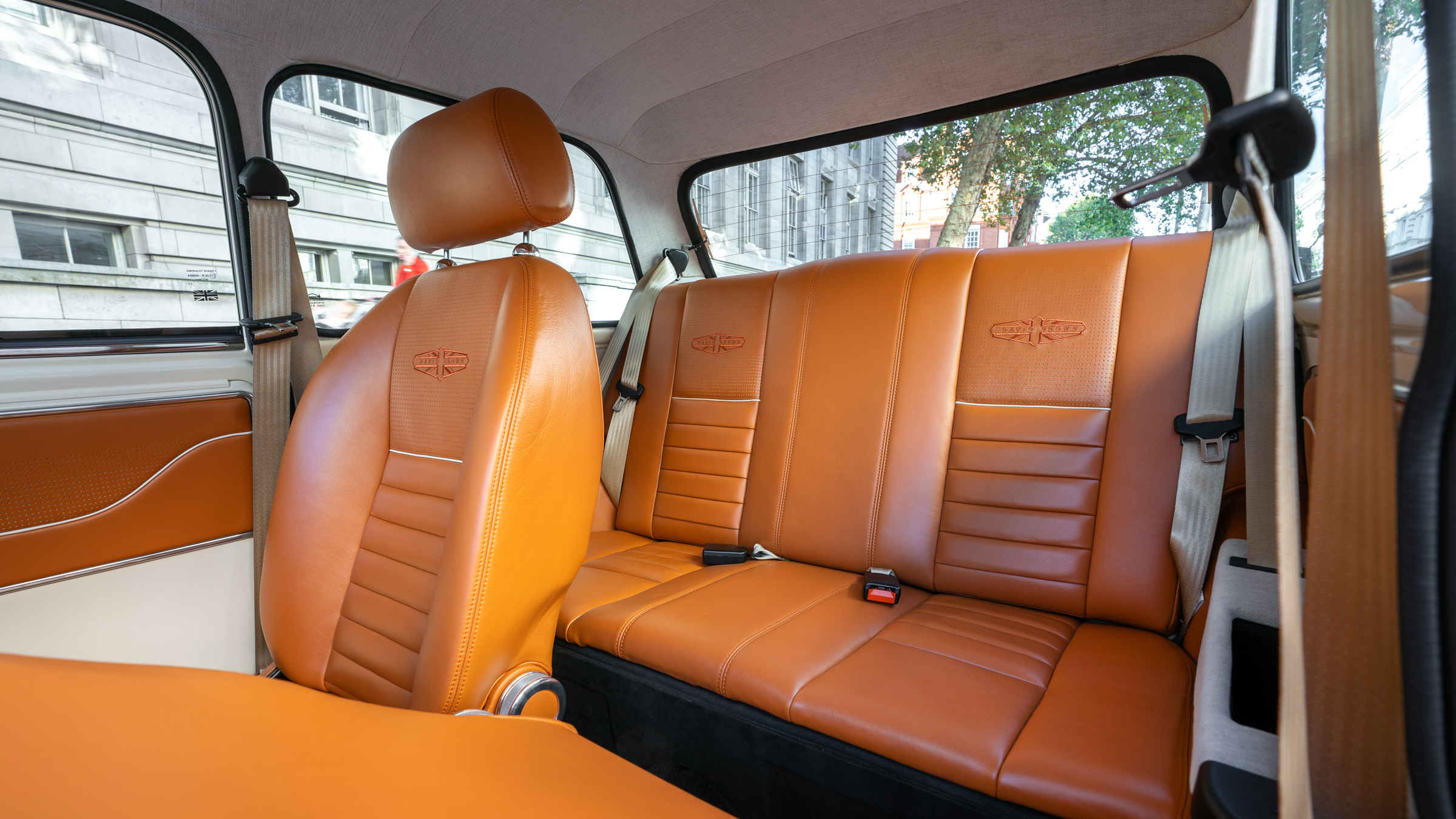
Those fortunate customers are unlikely to be taking many friends with them though.
The back seats are very small indeed, but at least they are beautifully upholstered. The doors have more storage than they ever did in period, the ventilation works properly, the wooden steering wheel looks and feels absolutely perfect, and there’s a sympathetically installed touchscreen with navigation, Bluetooth and Apple CarPlay. Behind that wheel are a set of gorgeous dials, period in design but reconfigured for the electric drivetrain, and up above there’s a wonderful headlining that looks and feels like a vintage fabric sofa.
The metal indicator and wiper stalks are cold to the touch, and so are the electric window switch toggles and dials for adjusting the air conditioning, and the gear selector and hand brake. It’s a masterclass in designing an interior with everything you need and nothing you don’t.
Step outside and the de-seamed body is decorated with a redesigned front grille and modern lighting all round. Purists might object to the rear light units in particular, but I’m a fan. They add a splash of modernity to the recipe without going to far, while the wheels, wipers and chrome bumpers are just how Mini fans of old will remember them.
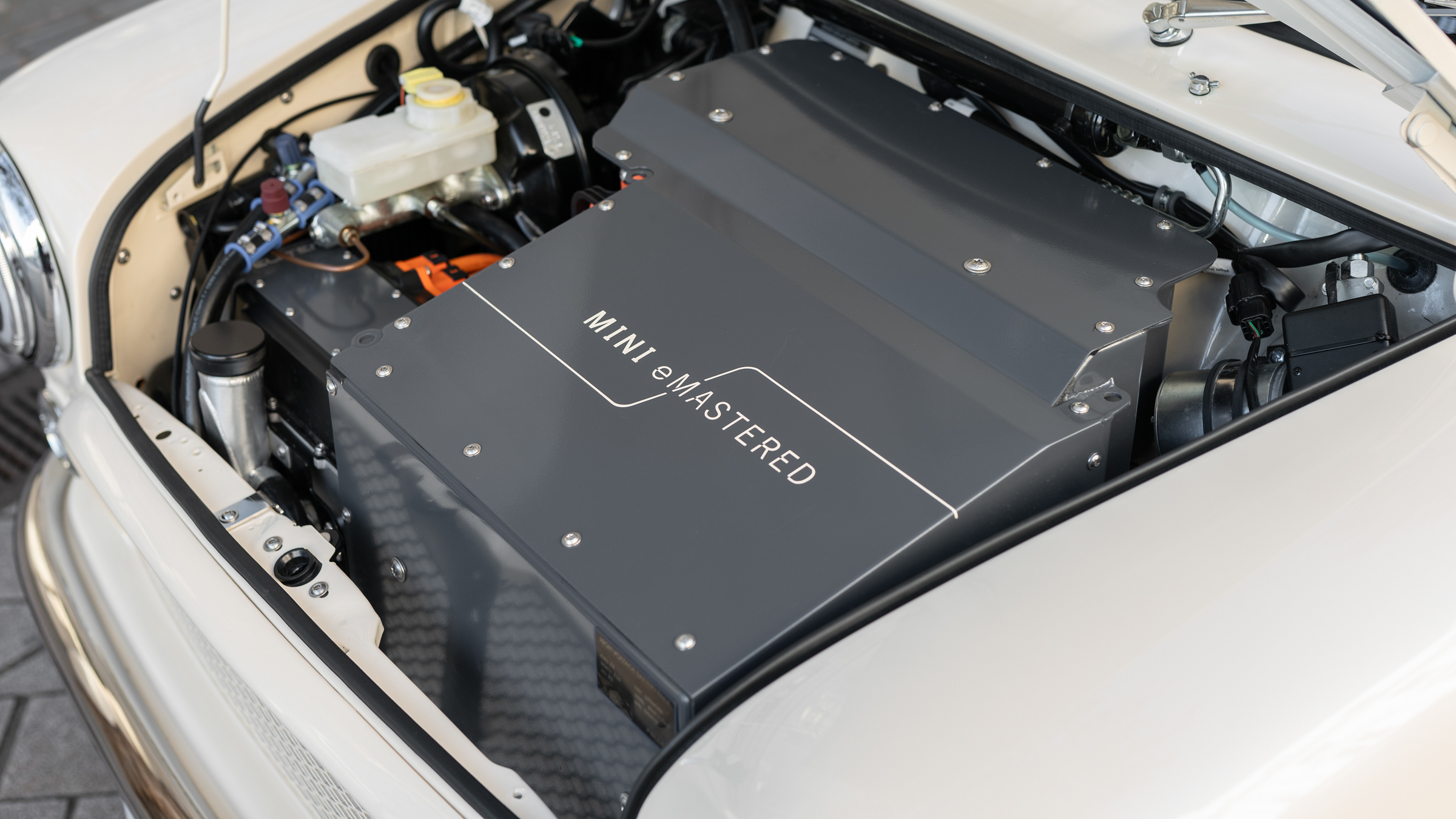
Naturally, there is no exhaust. I’ve always quite liked the look of a single or dual tailpipe sprouting out from the rear of a Mini. But unlike, say, a Jaguar E-Type, it isn’t fundamental to the aesthetic of the car. And, also unlike an E-Type, the engine was never a reason to lust after an old Mini.
Leaving aside the sort of souped-up Cooper S racers you see at Goodwood Revival, the classic Mini was far more about the styling, packaging and handling than it was the straight-line performance. In that sense the eMastered loses nothing by swapping hydrocarbons for electrons.
We can all picture the heroic chase scenes of The Italian Job (1969) as clear as day. But can you honestly recall the exhaust note of the three Minis? There’s a reason why the film begins not with music of the instrumental variety, but with the wailing of a Lamborghini Miura’s V12.
Ripping the engine out of a classic car and replacing it with batteries is often considered sacrilege, and claims are made of how the carbon used to do so will never be offset by the reduced emissions of the car itself. But I think there’s more to it than that. Removing the engine from a classic Ferrari – or indeed that Miura – is undoubtedly wrong, but the engine of an old Mini, an original Fiat 500 or a Citroen 2CV? Those can be turned into posh coffee tables for all I care, because the installation of a motor and a battery pack does their character no harm at all.

Electrification makes such cars easier to drive and more reliable for a start, while also complying with emissions regulations and meaning the owner can drive anywhere they like in busy cities like London, emissions- and tax-free. I love the idea of an electric classic Mini and I want a Mini eMastered very badly indeed. It would make me smile every single day.
But at £125,000 plus tax, this car certainly isn’t cheap. That makes me sad, of course, but such a price tag (and, admittedly, such a fit and finish) turns the humble Mini into a luxury item. It is a car for the few, not the many. And while that may well cause Mini designer Alec Issigonis to turn in his grave, it at least gives new life to the definitive 60s automotive icon.
And in any case, the Mini always was a classless car, driven by everyone from your parents to The Beatles at the height of their fame. Back in the 60s they were occasionally treated to plush leather interiors for a hefty fee, so I don't have a problem with a handful getting the same treatment today. In a climate conscious world, swapping out the engine for an electric motor only adds to the appeal.
Alistair is a freelance automotive and technology journalist. He has bylines on esteemed sites such as the BBC, Forbes, TechRadar, and of best of all, T3, where he covers topics ranging from classic cars and men's lifestyle, to smart home technology, phones, electric cars, autonomy, Swiss watches, and much more besides. He is an experienced journalist, writing news, features, interviews and product reviews. If that didn't make him busy enough, he is also the co-host of the AutoChat podcast.
